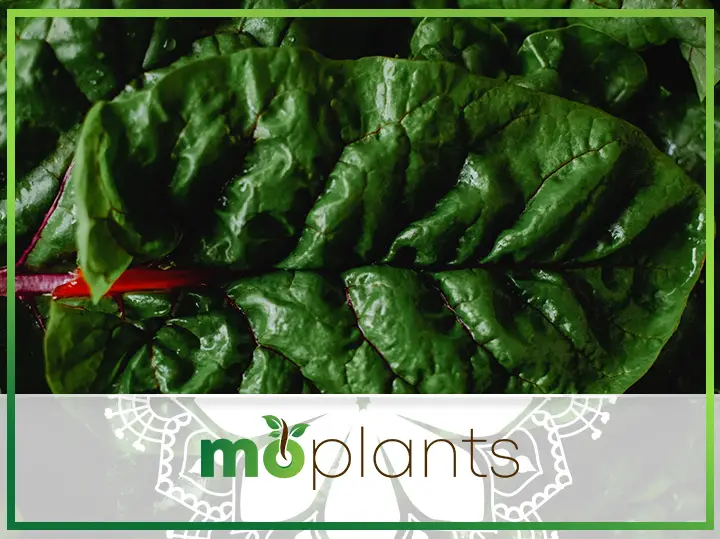This is a pretty, hardy plant with broad leaves and fuchsia, red or green ends, which are used in pies and other desserts. Stalks are usually picked in the early summer, although seedlings are often covered in containers to harvest parboiled stems in late winter. The plant’s sweet taste depends on how old the branches are.
Growing Rhubarbs is easy, and plants keep giving good crops for a long time. People often eat its stalk. Traditional Chinese medicine uses both the root and the underground stem. The plant has chemicals that may help cold sores heal and reduce swelling. It also has fiber, which could help lower cholesterol and help with stomach problems.
Whether you’re looking to grow cold green rhubarbs or sweet and juicy cherry red ones, this guide will help you till the end.
Varieties Of Rhubarb
Different kinds of rhubarb have different amounts of sourness and fiber. They can be almost pure green or nearly pure red. Most of the time, the epidermis is almost red, and the flesh can be from light green to dark green. Hue doesn’t cause any specific flavors. When making pies, redder varieties are better because the filling looks better than the greyish color of boiled green varieties. Different types also have different heights and levels of health. The green types are more robust and have longer stems than the red ones.
The type of rhubarb you choose to grow depends on your preference of color and what you intend to use it for.
Red Rhubarbs
If you like red rhubarb, you’ll love Holstein Bloodred, a vigorous plant with succulent, deep red stalks. McDonald’s Canadian Red is yet another deep-colored rhubarb that can be canned, frozen, or used to make rhubarb pies. Canada Red, on the other hand, is a variant that has a cherry-red color and tastes sweet and juicy.
Most types of rhubarb aren’t red all the way through, but Colorado Red is one of the few. This variety makes stalks about the size of celery, and its pretty color makes it a favorite for making jams and jellies. Cherry Red is a sweet and gentle type with long, thick, cherry-red stalks. Victoria, also called Large Victoria, has medium-sized stalks that are dark cranberry red at the bottom and turn greener as they get nearer to the leaves.
Green Rhubarbs
If you are interested in green rhubarb plants, Riverside Giant is a cold-hardy type with lengthy, very deep green stalks. Turkish rhubarb has a mild flavor and is primarily green, except for a hint of crimson at its bottom.
If you’re looking for one with an unexpected look, try German Wine, which has green stalks with reddish spots. This type of plant is said to be one of the sweetest. The look of The Sutton, which has green and red stripes, isn’t always liked. But this type of rhubarb is fragrant, soft, and slightly sweet.
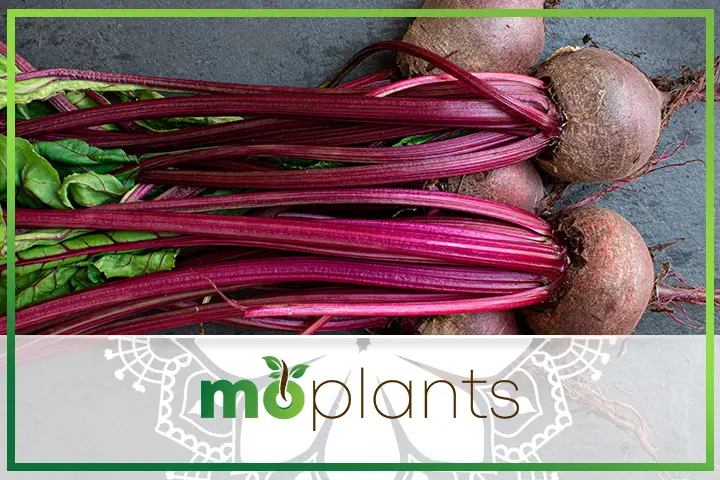
How To Plant Rhubarbs
In full sun, this plant thrives, although it may also grow in moderate shade. Make sure the soil is well-drained and rich before deciding where to plant. It rots quickly if it is stored in a moist environment. Compost, rotting manure, or other organic materials may be added to the soil to enrich it.
As robust feeders, these plants require the addition of organic matter to their soil. Make sure the land is ready to be sown. They grow almost 2-3 feet high. Ensure you choose a location that will give each plant ample space to grow.
Here are some more specifics to look out for:
What Time Of The Year Can You Plant?
They can be planted at the end of fall or the beginning of spring. Plant its crowns in the fall, after it has gone to sleep, and you’ll have a full crop in the spring. Plant crowns in the spring as quickly as the soil can be worked, while the ends are still stagnant and before the plants start to grow or just as it starts to grow. You can use a thermometer to check that the soil should be no less than 50°F.
Buying And Planting
Plant rhubarb crowns that are a year old. You can get these at a garden center, nursery, or online. They can be bought as bare-rooted plants or as seedlings just growing in pots that are ready to be moved. (You can grow it from a seed, but you shouldn’t.)
Before planting, get rid of any weeds that come back every year. Then you’ll have to create a channel as big as a bushel basket. Plant rhubarb 2 to 4 feet apart, and leave three to four feet between rows. Plant the crowns such that the top seems to be about two inches below the surface of the soil and the buds are facing up.
When you plant, make sure to water it well.
Growing In A Pot
If your soil is too heavy or you don’t have enough room in your garden, you can grow this plant in a container. It needs a big pot to grow in because its roots are big. Choose one with a diameter of at least 1 foot and openings for drainage. The best kind of pot is one made of unglazed clay, which will let the soil’s extra moisture leave through its walls.
How To Prune
As soon as taller flower stalks than leaf stalks appear, cut them off. If you let rhubarb grow up and bloom, the leaves’ stalks will become thinner.
Spreading Rhubarb
The perennial herb grows best when it is split into new plants. This can be done in early spring or even the fall, but it’s easier in the spring whenever the plant is growing new roots and coming out of dormancy. To keep rhubarb plants healthy and strong, you should divide them about every five years. Whenever the plant begins to make thin stalks, you’ll know it’s time to split it.
This is how:
- Keep as many of the roots as you can when you dig up the plant.
- Split the crown gently into pieces that are about 2 inches wide and have roots connected to each piece.
- Put the pieces back at least three feet off from each other or in entirely different places. Water well.
Planting From The Seed
Rhubarb isn’t usually grown from seeds because it takes quite some time to get a good crop and seeds can be hard to find at times. If you want to grow plants from seeds, put wet seed-starting mix in a tray. Before planting, soak the seeds for around an hour in warm water. Then, farm them around an inch deep. Place the tray in vibrant, indirect light and cover this with saran wrap to keep the moisture in. Make sure the soil stays damp but not wet. In just two weeks, the seeds should sprout.
Infographic
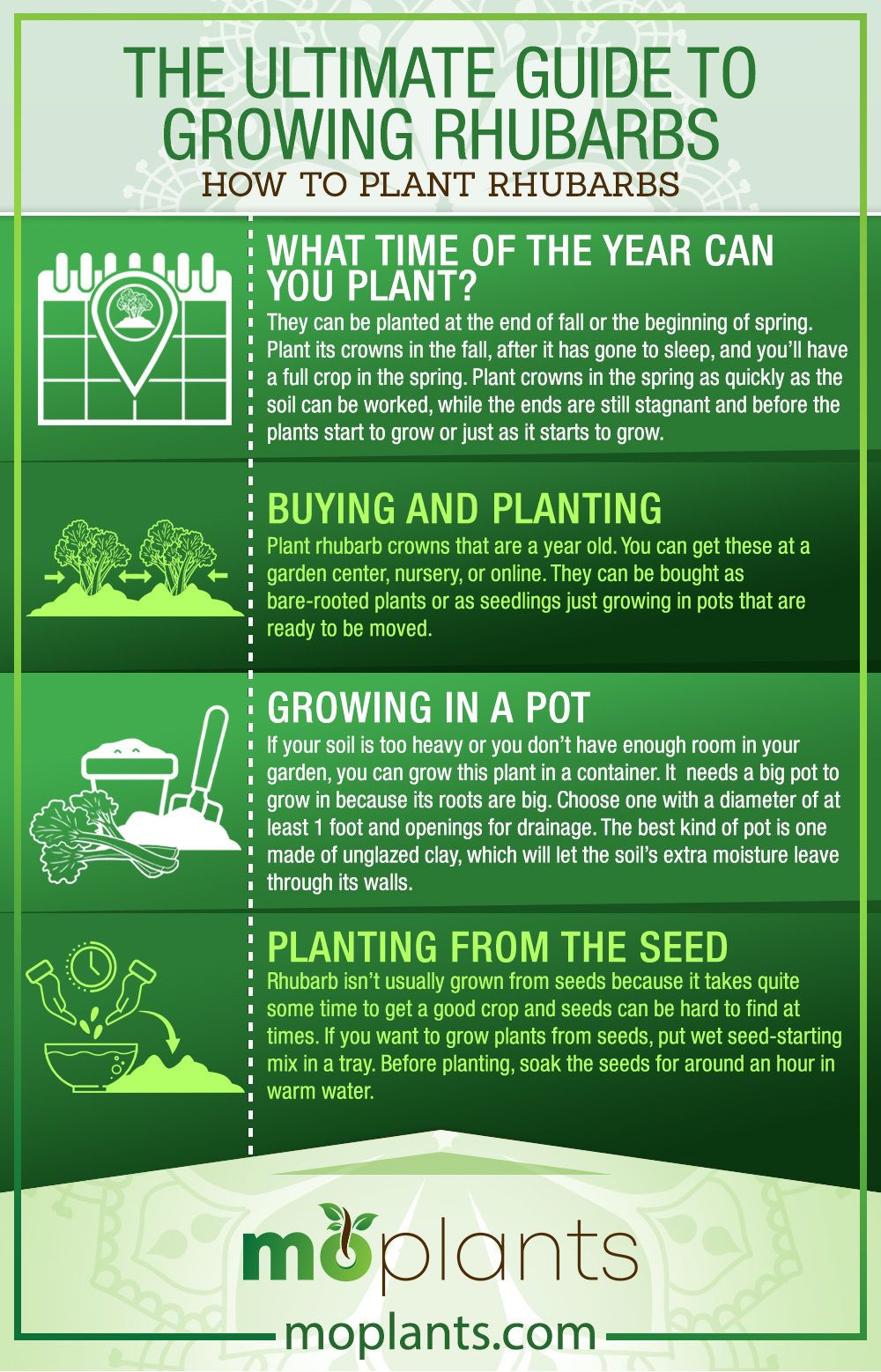
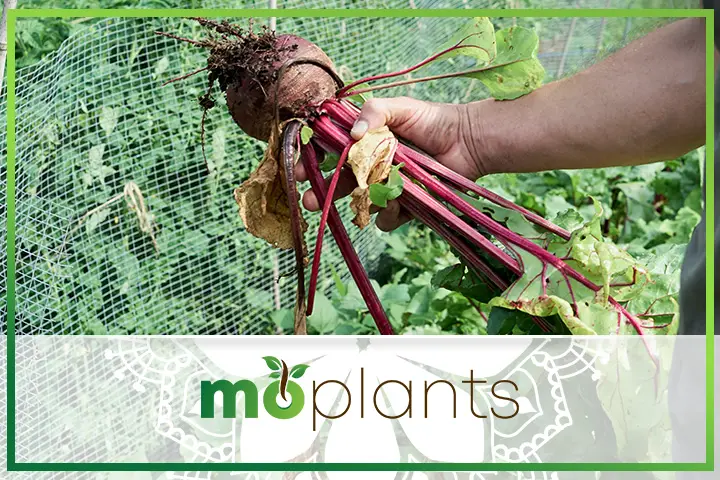
How To Take Care Of Rhubarbs
You don’t have to do much to take care of these plants. They remarkably just sprout out on their own every spring. Remove whatever weed growth from the space, and be careful when you’re working around the stalks, so you don’t hurt the plant.
Soil
Rhubarb grows best in soil that is slightly acidic to neutral. It also likes soil that has a lot of organic matter because that helps it grow. The ground should be damp, but it should also drain well. If your soil is heavy, like clay, you might want to plant in elevated garden beds to give it the right place to grow.
Moisture
The perennial herb likes consistent moisture. Even though older plants can handle some drought, this one needs to be watered every day for its first two years. That, said don’t water rhubarb too much because the crowns will rot if the soil is too wet. An upper inch of soil should be dry before you water the plant.
Maximum And Minimum Temperature
Rhubarb grows best in places where the minimum is well below 40 degrees farenheit in the colder season and the maximum is below 75 during the hotter ones. In warmer places, this can be cultivated as an annual, because too much warmth can make the stalks and leaves thin. In dry places, it will be hard to keep the hydration that rhubarb needs, but a surface of mulch can help keep soil moist.
Fertilizer
To grow well, rhubarb needs a lot of organic matter, like compost, in the soil. Don’t use any chemical fertilizer on just a younger plant because the nitrates can kill it. At the start of the second growing season, you can put an organic fertilizer around your plant, but make sure it’s safe if you want to eat your rhubarb.
Infographic
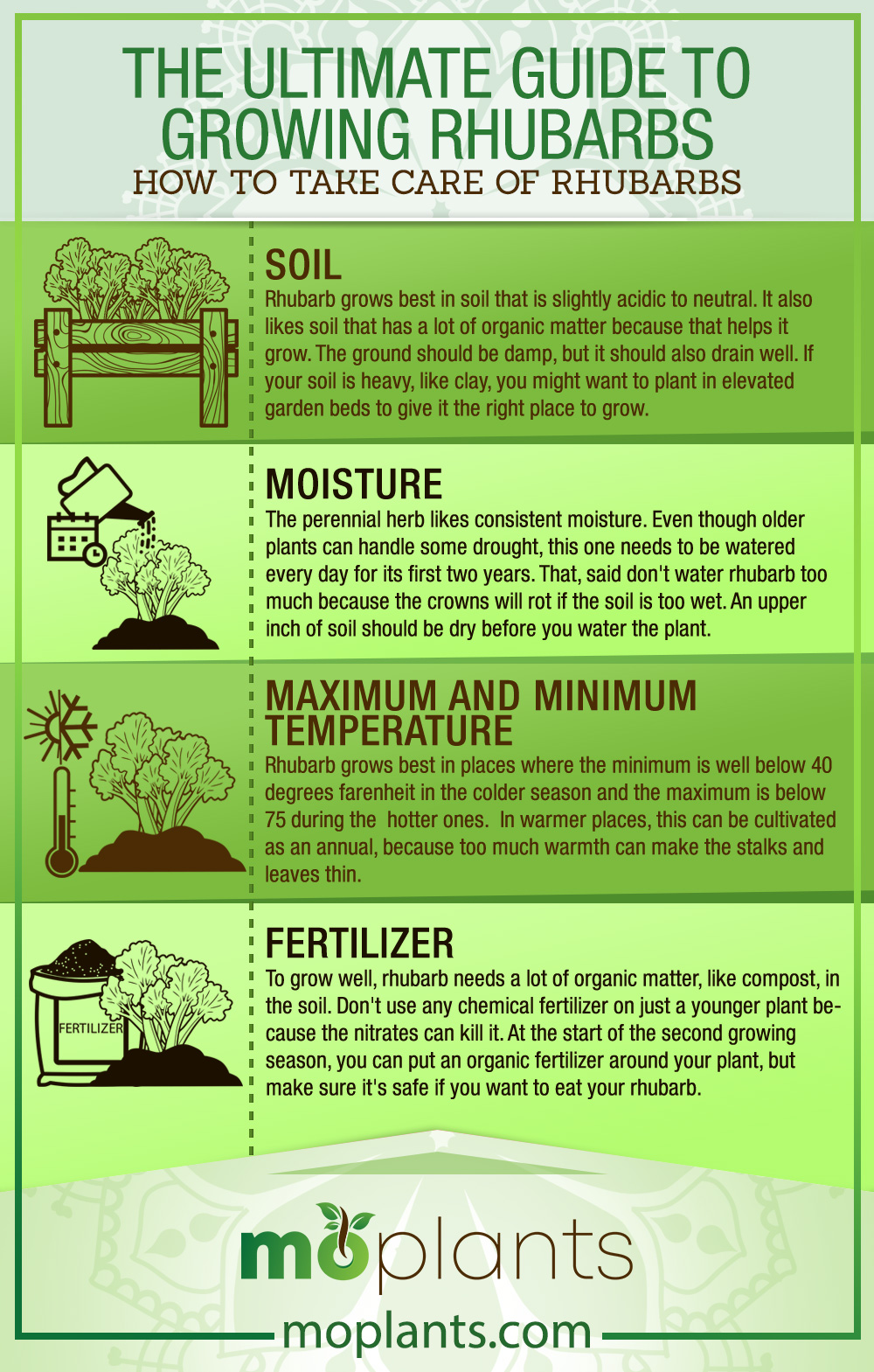
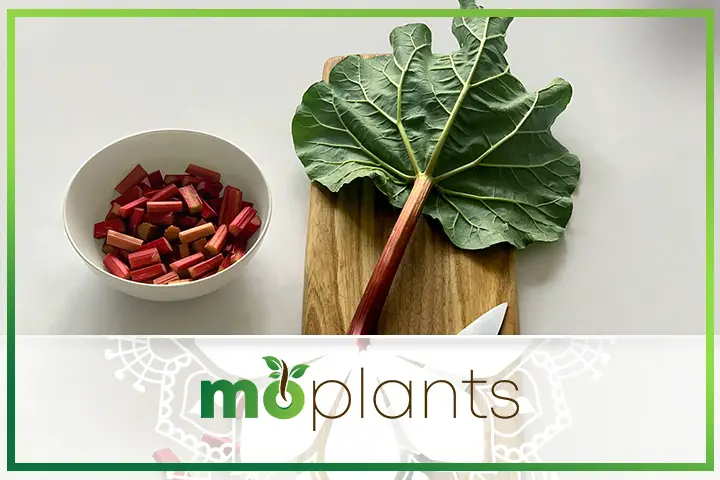
Common Problems With Growing Rhubarbs
Downy mildew (Peronospora destructor), which shows up as brown spots on the leaves, is the primary disease that affects the plant. This happens in the aftermath of storms from the month of May to October.
Crown rot can also kill it. This disease, caused by two types of bacteria, might be hard to stop. Make absolutely sure that the plant is grown with other crops every few years and also that crops are grown in soils that drain well. Some species, which end up causing dark spots on the plant’s leaf surface, may hurt it just a little bit.
Few pests can hurt it, but you should watch out for aphids, the African black moth, worms, mealybugs, slugs and snails, the vegetable weevil, and grasshoppers without wings. Sugar cane worm is also dangerous. The sugar-like lesions just on the roots look like grains of sugar. The root-knot nematode can also hurt seedlings.
Weeds are hard to get rid of in a mature crop because deep mechanical hoeing can damage the roots. Hand-hoeing shallowly may well be the best way to get rid of weeds. Chemicals that kill diseases, pests, and weeds are registered and made available in different ways all the time. Talk to a skilled and knowledgeable horticultural agronomist about chemicals currently registered for use on this crop or have a permit to do so.
The information on a chemical’s label or permit must be followed. This includes directions for use, comments about critical service, the holding period, and the maximum amount of residue that can be left behind. As part of quality assurance (QA) plans for growing horticultural crops, growers must have up-to-date information about chemicals or any available permits.
Harvesting Season
Don’t pick any rhubarb from your plant during its first year of growth. This will give it time to get established. In the second season, you can get a small harvest. Even during the third quarter, feel free to pick as much as you want, but you should never take over a quarter of the total to 50 percent of it at once. But if you grow the plant as an annual in a warm climate, you can pick as much as you would like that year because it probably won’t make it to the second.
Spring is the main time to harvest, but there may be some smaller harvests all through the summer. When stalks are 15 to 20 inches long and red, they are ready to be picked. To gather, cut the stalks where they meet the ground. Then take the leaves off. Freshly picked stalks can be cooked right away, frozen, or kept in the fridge for a week’s time. Most of the time, pies taste best and are easiest to make with stalks that are picked in the spring. Future stalks can be tough, so they are usually best when they are simmered for sauces or jams. With this guide, you can start growing rhubarbs in your own backyard so you’ll never have to worry about buying them again. There’s nothing quite like jam made from freshly harvested vegetables. All you have to do is make sure that the conditions for the plant’s upkeep are met.

